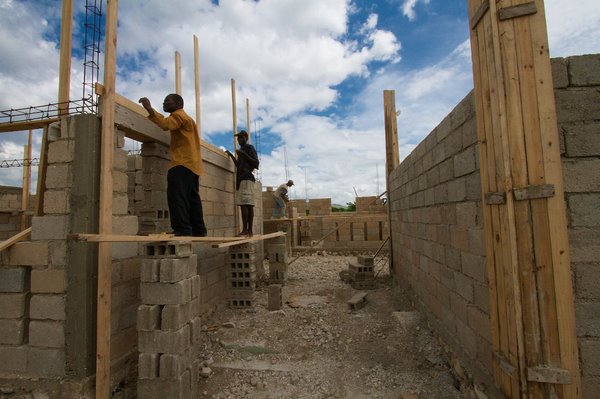
One Year Later in Haiti: NPR Story Sheds Light on Haitians’ Perseverance
(MissionNewswire) A recent National Public Radio report highlights how hard it is to comprehend the scale of the disaster—even one year later.
“One year later, the effects of the quake are everywhere. Rubble still covers much of the capital. More than 1 million people remain in improvised huts in makeshift encampments,” reports Jason Beaubien of NPR.
“A year later, parts of the city still appear post-apocalyptic. The damage both physical and psychological is everywhere,” the news report continues.
The Jan. 5, 2011, story also reports that some progress is being made in Haiti, but it’s coming slowly.
In the report, Reginald Boulos, the head of the Haitian Chamber of Commerce, says it’s still hard to comprehend the scale of this disaster.
“Given the proportion of the destruction — 200,000, 300,000 people dead, over, what, 2 million people — 10 percent of the population. Imagine any city in the U.S. where 10 percent of the population [died] overnight. People don’t realize, I think; [they] underestimate what this catastrophe was,” he says.
A year after a devastating earthquake killed more than 200,000 people and destroyed Port-Au-Prince, more than 1.5 million people remain homeless and face a challenging and slow recovery process.
Organizations like Salesian Missions, which has operated programs in Haiti since 1935, understand the immense challenges in Haiti.
“We have to keep in mind that many of the challenges that we are facing now were in existence even before the earthquake a year ago,” says Father Mark Hyde, director of Salesian Missions. “The earthquake caused devastation and loss, and increased the needs of an already poor and fragile country.”
Along with the challenges, the NPR story highlights the spirit and resilience of the Haitian people.
Having traveled to Haiti before the earthquake and several times since, Fr. Mark agrees.
“The most successful work will be done by organizations—both international and local—that focus on the dignity, strength and immense courage of the Haitian people,” he says. “Organizations like Salesian Missions that were members of the community decades before the earthquake are the ones that the Haitians trust to have their best interests at heart.”
In the NPR story, Nigel Fisher, the United Nations’ coordinator for humanitarian affairs in Haiti, says it’s not fair to say that nothing has been accomplished over the past year. He highlights the fact that the country is not just rebuilding, it is going through a transformation—it needs to go through a transformation. And that takes time.
International NGOs have long been a crucial part of the fragile infrastructure in Haiti, and they will continue to be integral as the countries rebuilds—as it transforms.
“In Haiti, youth are the long-term promise for rebuilding their country,” says Fr. Hyde.” They are eager to become nurses, teachers and construction workers, as well as to develop the skills needed to be the country’s new leaders.”
He adds that Salesian Missions is fully committed to rebuilding its educational infrastructure. Since 1935, Salesians have worked to educate Haiti’s most vulnerable youth and trained the best and brightest to become teachers. Since the earthquake a year ago, 23,000 students have returned to classes at Salesian Missions educational institutions and plans are underway to rebuild schools and youth centers.
While some humanitarian organizations and many people have left the country, Salesian Missions will continue its work for the people of Haiti as it has since 1935. Salesian Missions is an integral part of the Haitian infrastructure — operating schools, feeding programs, health clinics in the poorest areas. Many of the food and other relief items sent to Haiti were secured, stored and distributed using Salesian infrastructure and knowledge.
